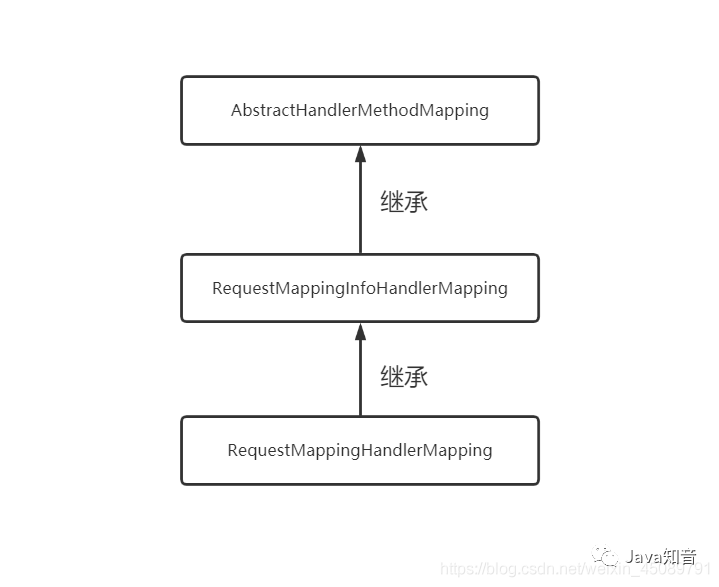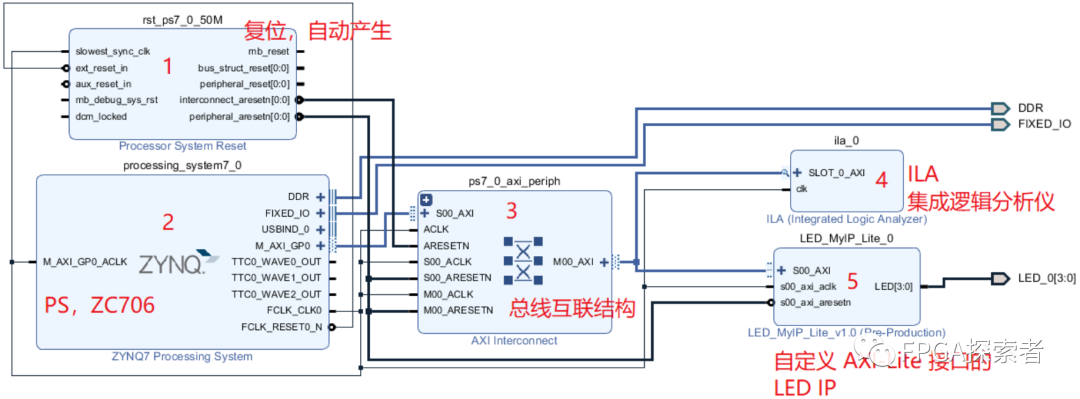在實際項目中使用到了springsecurity作為安全框架,我們會遇到需要放行一些接口,使其能匿名訪問的業務需求。但是每當需要當需要放行時,都需要在security的配置類中進行修改,感覺非常的不優雅。
例如這樣:

所以想通過自定義一個注解,來進行接口匿名訪問。在實現需求前,我們先了解一下security的兩種方行思路。
第一種就是在configure(WebSecurity web)方法中配置放行,像下面這樣:
@Overridepublicvoidconfigure(WebSecurityweb)throwsException{
web.ignoring().antMatchers("/css/**","/js/**","/index.html","/img/**","/fonts/**","/favicon.ico","/verifyCode");
}
第二種方式是在configure(HttpSecurity http)方法中進行配置:
@Overrideprotectedvoidconfigure(HttpSecurityhttpSecurity)throwsException
{
httpSecurity
.authorizeRequests()
.antMatchers("/hello").permitAll()
.anyRequest().authenticated()
}
兩種方式最大的區別在于,第一種方式是不走 Spring Security 過濾器鏈,而第二種方式走 Spring Security 過濾器鏈,在過濾器鏈中,給請求放行。
在我們使用 Spring Security 的時候,有的資源可以使用第一種方式額外放行,不需要驗證,例如前端頁面的靜態資源,就可以按照第一種方式配置放行。
有的資源放行,則必須使用第二種方式,例如登錄接口。大家知道,登錄接口也是必須要暴露出來的,不需要登錄就能訪問到的,但是我們卻不能將登錄接口用第一種方式暴露出來,登錄請求必須要走 Spring Security 過濾器鏈,因為在這個過程中,還有其他事情要做,具體的登錄流程想了解的可以自行百度。
了解完了security的兩種放行策略后,我們開始實現
首先創建一個自定義注解
@Target({ElementType.METHOD})//注解放置的目標位置,METHOD是可注解在方法級別上@Retention(RetentionPolicy.RUNTIME)//注解在哪個階段執行@Documented//生成文檔public@interfaceIgnoreAuth{
}
這里說明一下,@Target({ElementType.METHOD})我的實現方式,注解只能標記在帶有@RequestMapping注解的方法上。具體為什么下面的實現方式看完就懂了。
接下來創建一個security的配置類SecurityConfig并繼承WebSecurityConfigurerAdapter
@EnableGlobalMethodSecurity(prePostEnabled=true,securedEnabled=true)
publicclassSecurityConfigextendsWebSecurityConfigurerAdapter
{
@Autowired
privateRequestMappingHandlerMappingrequestMappingHandlerMapping;
/**
*@description:使用這種方式放行的接口,不走SpringSecurity過濾器鏈,
*無法通過SecurityContextHolder獲取到登錄用戶信息的,
*因為它一開始沒經過 SecurityContextPersistenceFilter 過濾器鏈。
*@dateTime:2021/7/1910:22
*/
@Override
publicvoidconfigure(WebSecurityweb)throwsException{
WebSecurityand=web.ignoring().and();
MaphandlerMethods=requestMappingHandlerMapping.getHandlerMethods();
handlerMethods.forEach((info,method)->{
//帶IgnoreAuth注解的方法直接放行
if(StringUtils.isNotNull(method.getMethodAnnotation(IgnoreAuth.class))){
//根據請求類型做不同的處理
info.getMethodsCondition().getMethods().forEach(requestMethod->{
switch(requestMethod){
caseGET:
//getPatternsCondition得到請求url數組,遍歷處理
info.getPatternsCondition().getPatterns().forEach(pattern->{
//放行
and.ignoring().antMatchers(HttpMethod.GET,pattern);
});
break;
casePOST:
info.getPatternsCondition().getPatterns().forEach(pattern->{
and.ignoring().antMatchers(HttpMethod.POST,pattern);
});
break;
caseDELETE:
info.getPatternsCondition().getPatterns().forEach(pattern->{
and.ignoring().antMatchers(HttpMethod.DELETE,pattern);
});
break;
casePUT:
info.getPatternsCondition().getPatterns().forEach(pattern->{
and.ignoring().antMatchers(HttpMethod.PUT,pattern);
});
break;
default:
break;
}
});
}
});
}
}
在這里使用Spring為我們提供的RequestMappingHandlerMapping類,我們可以通過requestMappingHandlerMapping.getHandlerMethods();獲取到所有的RequestMappingInfo信息。
以下是源碼部分,可不看,看了可以加深理解
這里簡單說一下RequestMappingHandlerMapping的工作流程,便于理解。我們通過翻看源碼

繼承關系如上圖所示。
AbstractHandlerMethodMapping實現了InitializingBean接口
publicinterfaceInitializingBean{
voidafterPropertiesSet()throwsException;
}
AbstractHandlerMethodMapping類中通過afterPropertiesSet方法調用initHandlerMethods進行初始化
publicvoidafterPropertiesSet(){
this.initHandlerMethods();
}
protectedvoidinitHandlerMethods(){
String[]var1=this.getCandidateBeanNames();
intvar2=var1.length;
for(intvar3=0;var3if(!beanName.startsWith("scopedTarget.")){
this.processCandidateBean(beanName);
}
}
this.handlerMethodsInitialized(this.getHandlerMethods());
}
再調用processCandidateBean方法:
protectedvoidprocessCandidateBean(StringbeanName){
ClassbeanType=null;
try{
beanType=this.obtainApplicationContext().getType(beanName);
}catch(Throwablevar4){
if(this.logger.isTraceEnabled()){
this.logger.trace("Couldnotresolvetypeforbean'"+beanName+"'",var4);
}
}
if(beanType!=null&&this.isHandler(beanType)){
this.detectHandlerMethods(beanName);
}
}
通過調用方法中的isHandler方法是不是requestHandler方法,可以看到源碼是通過RequestMapping,Controller 注解進行判斷的。
protectedbooleanisHandler(ClassbeanType){
returnAnnotatedElementUtils.hasAnnotation(beanType,Controller.class)||AnnotatedElementUtils.hasAnnotation(beanType,RequestMapping.class);
}
判斷通過后,調用detectHandlerMethods方法將handler注冊到HandlerMethod的緩存中。
protectedvoiddetectHandlerMethods(Objecthandler){
ClasshandlerType=handlerinstanceofString?this.obtainApplicationContext().getType((String)handler):handler.getClass();
if(handlerType!=null){
ClassuserType=ClassUtils.getUserClass(handlerType);
Mapmethods=MethodIntrospector.selectMethods(userType,(method)->{
try{
returnthis.getMappingForMethod(method,userType);
}catch(Throwablevar4){
thrownewIllegalStateException("Invalidmappingonhandlerclass["+userType.getName()+"]:"+method,var4);
}
});
if(this.logger.isTraceEnabled()){
this.logger.trace(this.formatMappings(userType,methods));
}
methods.forEach((method,mapping)->{
MethodinvocableMethod=AopUtils.selectInvocableMethod(method,userType);
this.registerHandlerMethod(handler,invocableMethod,mapping);
});
}
}
通過registerHandlerMethod方法將handler放到private final Mapmap中。
而requestMappingHandlerMapping.getHandlerMethods()方法就是獲取所有的HandlerMapping。
publicMapgetHandlerMethods() {
this.mappingRegistry.acquireReadLock();
Mapvar1;
try{
var1=Collections.unmodifiableMap(this.mappingRegistry.getMappings());
}finally{
this.mappingRegistry.releaseReadLock();
}
returnvar1;
}
最后就是對map進行遍歷,判斷是否帶有IgnoreAuth.class注解,然后針對不同的請求方式進行放行。
handlerMethods.forEach((info,method)->{
//帶IgnoreAuth注解的方法直接放行
if(StringUtils.isNotNull(method.getMethodAnnotation(IgnoreAuth.class))){
//根據請求類型做不同的處理
info.getMethodsCondition().getMethods().forEach(requestMethod->{
switch(requestMethod){
caseGET:
//getPatternsCondition得到請求url數組,遍歷處理
info.getPatternsCondition().getPatterns().forEach(pattern->{
//放行
and.ignoring().antMatchers(HttpMethod.GET,pattern);
});
break;
casePOST:
info.getPatternsCondition().getPatterns().forEach(pattern->{
and.ignoring().antMatchers(HttpMethod.POST,pattern);
});
break;
caseDELETE:
info.getPatternsCondition().getPatterns().forEach(pattern->{
and.ignoring().antMatchers(HttpMethod.DELETE,pattern);
});
break;
casePUT:
info.getPatternsCondition().getPatterns().forEach(pattern->{
and.ignoring().antMatchers(HttpMethod.PUT,pattern);
});
break;
default:
break;
}
});
}
});
看到這里就能理解我最開始的強調的需標記在帶有@RequestMapping注解的方法上。我這里使用到的是configure(WebSecurity web)的放行方式。它是不走security的過濾鏈,是無法通過SecurityContextHolder獲取到登錄用戶信息的,這點問題是需要注意的。
審核編輯:郭婷
-
接口
+關注
關注
33文章
8682瀏覽量
151603
原文標題:如何利用自定義注解放行 Spring Security 項目的接口
文章出處:【微信號:AndroidPush,微信公眾號:Android編程精選】歡迎添加關注!文章轉載請注明出處。
發布評論請先 登錄
相關推薦
Springboot是如何獲取自定義異常并進行返回的
使用Spring自定義注解的實現
AN958:自定義設計的調試和編程接口
如何通過LUA實現自定義串口指令設置

自定義視圖組件教程案例
自定義算子開發

自定義AXI-Lite接口的IP及源碼分析

TSMaster 自定義 LIN 調度表編程指導





 如何通過自定義注解進行接口匿名訪問
如何通過自定義注解進行接口匿名訪問











評論